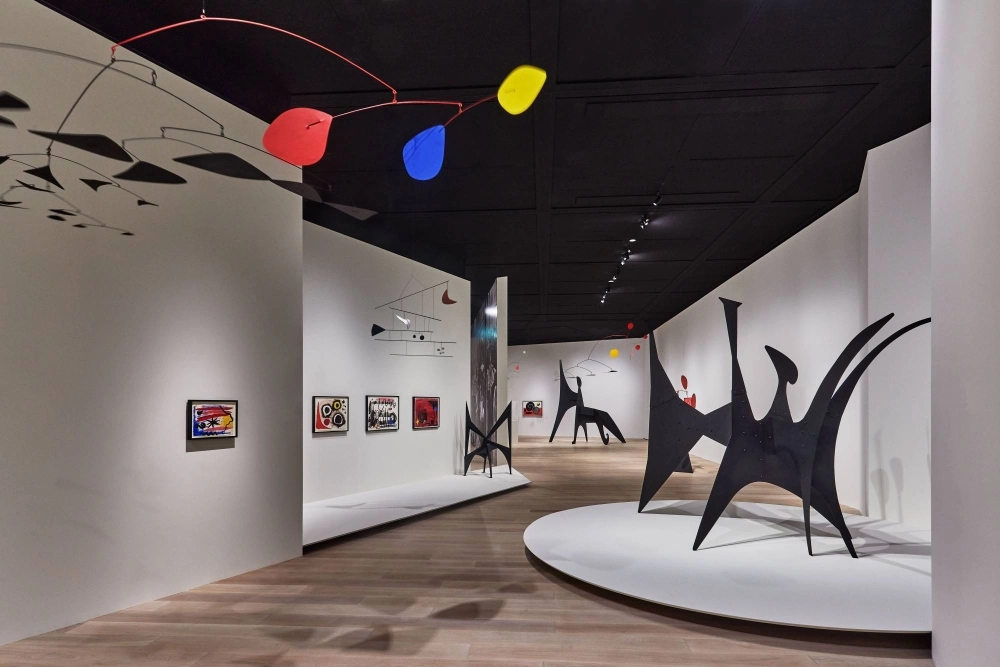At the entrance of Azabudai Hills Gallery, visitors are currently greeted by a giant black-and-white photo of the sculptor Alexander Calder in his New York studio, next to two of his most famous artworks: “White Panel” and “Devil Fish,” which was at the time under construction.
Calder stares directly at the lens, his gaze almost burrowing into the viewer from beyond. A Francophile American, he was born in 1898 to artist parents — his father a sculptor and his mother a portrait painter — and passed away in 1976 at the age of 78. Posthumous exhibits are, in a sense, always problematic since the chief celebrant is absent throughout the entire planning process.
But upon entering the 700-square-meter display area of the exhibition “Calder: Un effet du japonais” — where one is faced with Calder’s abstract dragon-like standing mobile “Fafnir” (1968) — it indeed seems as though the late, and inarguably most famous, sculptor of kinetic art has had some say in how this salute to himself has been shaped.

















With your current subscription plan you can comment on stories. However, before writing your first comment, please create a display name in the Profile section of your subscriber account page.